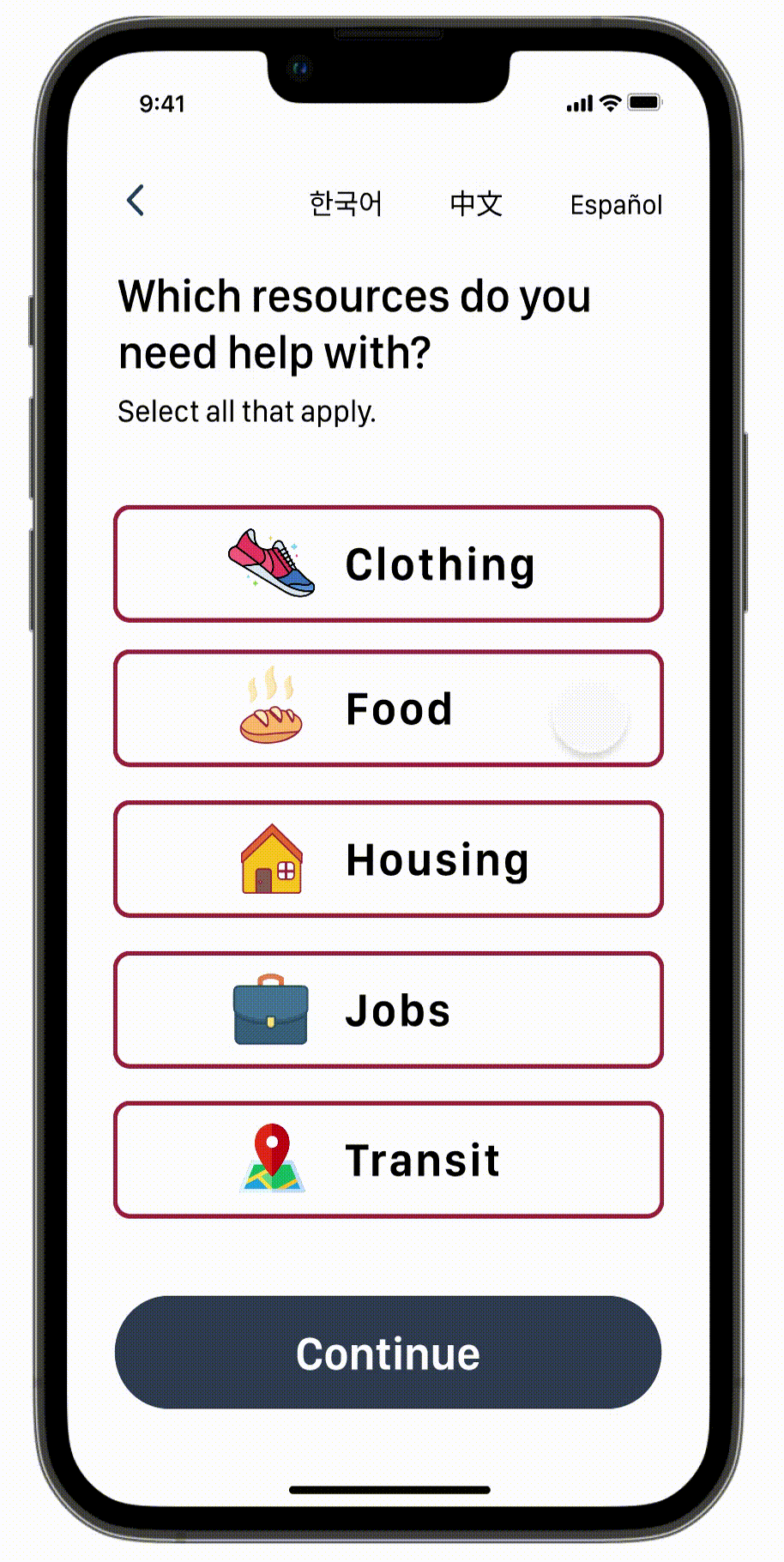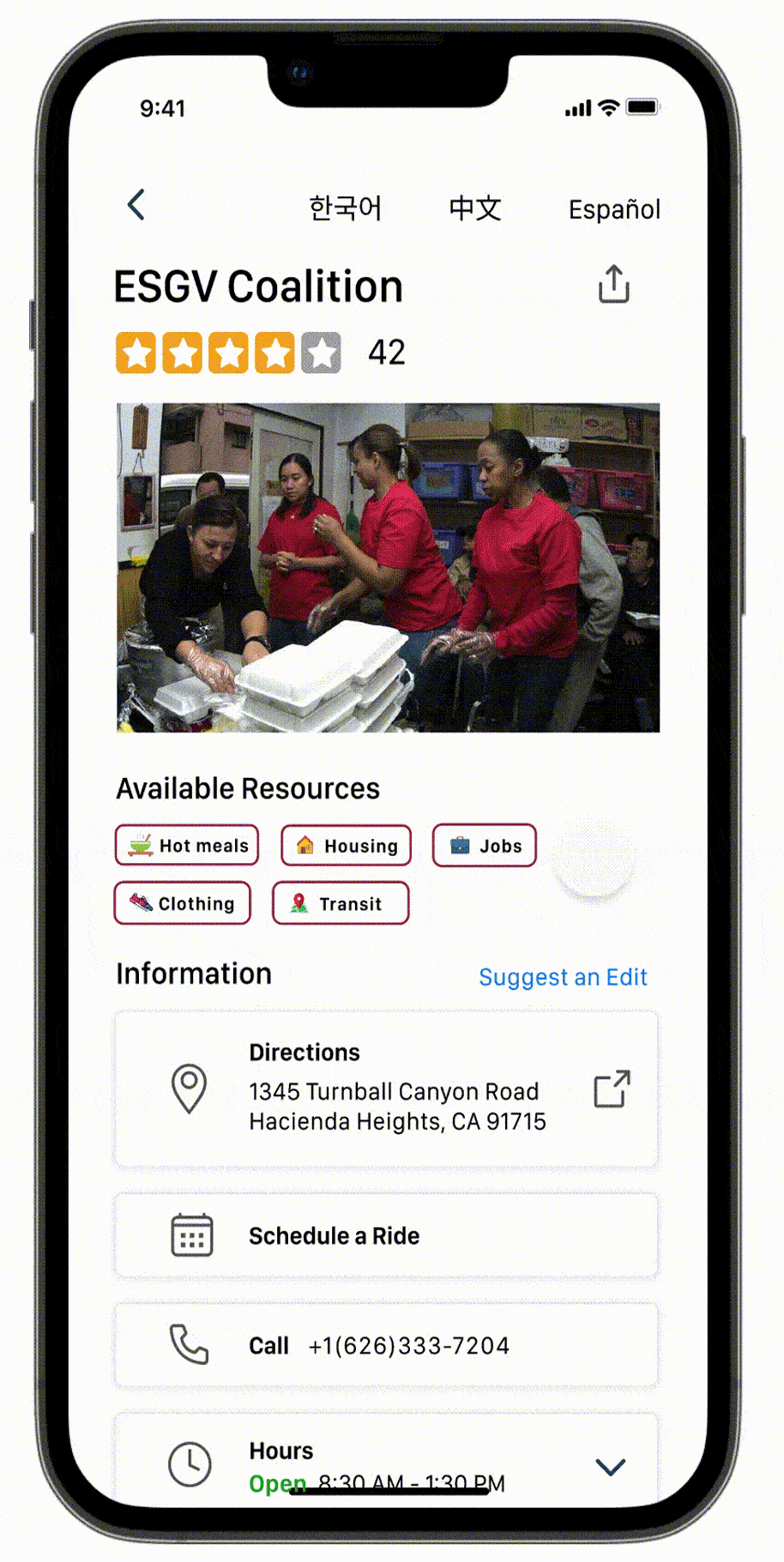Resource Management App for Church Staff
A digital resource platform to help church staff aid those in need in an expedited and efficient manner.
Deliverables: User Research, Wireframing, Sketches, Prototypes
Role: Researcher and UX/UI Designer
Timeline: Design Sprint - 5 days
CHALLENGE
Often times people that are homeless or low income in my community seek help from the local church whether it be food, clothing, internet or shelter. Church staff are using archaic and time consuming ways to communicate and provide resources, thus not allowing the maximum amount of support that could be given.
The ‘business’ concern that comes when helping those in need is a way to foster a more intimate relationship rather than just creating an app and never having that special human interaction.
Foster relationships while providing resources
SOLUTION
A resource management app where church staff can adeptly provide low income and homeless people information to shelters and programs, transportation assistance, and eligibility verification ensures beginning to end support. By having all the resources in one collective place, staff are able to allocate more time on other ways to increase community engagement.
Resource Management
Centralized help increases local community involvement
Provides specific results based on exactly the help that is needed, while also supporting multi-language translation for current demographic.
Guarantees a way to get to the destination, which is a critical first step to ensuring success. Securing transportation allows for less roadblocks in reaching the final goal while allowing time for interaction between church members and those in need.
Shuttle Service
3. Eligibility Checker
Predetermines qualifications for the program/shelter before making a trip out. If user doesn’t qualify, he/she will be redirected to church staff or facilities outside of the local community for better success at qualifying.
Research
Ethnographic research to gain A Better understanding
The initial idea was to volunteer at my local church’s monthly food bank to unveil underlying problems such as a shortage of LA Food Bank workers, volunteer turnout, and overqualified people taking advantage of the system.
Volunteering at my local church’s food bank
Church staff felt limited because everything was done on paper and by word of mouth
After performing ethnographic research and interviewing church staff about their vision for the future of the food bank, it was revealed that the goal was to actually provide resources for those that needed help in order to promote community engagement. The important questions to ask were:
What does the current process of helping a low income or homeless individual look like?
What is the current demographic of those seeking help?
What are their most common needs and requests?
How can we improve the success rate of helping these individuals?
IDEATION
A focus on transportation and eligibility
From answering those questions, I was able to see our problem space more clearly. Rather than just providing these individuals with information, my focus shifted to how we could better support them to achieve self sufficiency. These were the following pain points:
Limited access to information.
Trouble navigating through forms and qualifications to obtain help.
Lack of means to get to the resource location, whether it be money, no knowledge of bus fares and routes or too far to bike.
Ideation
Storyboard
Since church staff already coordinated rides for those in need by word of mouth, I decided to create a shuttle feature. Our ideation session led us to build on features such as:
Selecting categories based on the help needed.
Providing a shuttle service
Language translation for the target user.
Being able to check their eligibility before making the trip.
TESTING AND IMPROVEMENTS
Too much information!
On the last day of the sprint, due to time constraints, I was unable to schedule interviews with any of the homeless or low income people. Instead, I interviewed the main church staff that was responsible of incoming visitors that sought help as he was the most familiar with their needs. The takeaways were:
Too much information shown during each listing. The people coming in are overwhelmed already and needed help in the simplest way possible.
Onboarding is unnecessary and foods need to be differentiated between cooked and uncooked meals as homeless people don’t have access to kitchens.
Reviews are not the most helpful since most people are in desperate situations and can’t afford the luxury of picking and choosing.
Reflection
Due to the nature of design sprints, no revisions were made to the final prototype. But the lessons learned were:
Define the right problem to solve with the right users in mind. It it extremely important to keep business goals in mind while designing but also not forgoing user needs. Finding the right balance between the two makes for a good product.
First hand experience. Unfortunately due to the constraint of this sprint, I was unable to conduct interviews with real people that come in to seek help. I had to gather all my information about the users from my stakeholders. Going forward, I would love the chance to interview locals that are in need and reiterate my designs according to their insights.
Thanks for reading!
Let’s chat at michelletcwang@gmail.com











